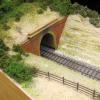epw006243 ENGLAND (1921). The Deepdene Hotel, Deepdene, 1921
© Copyright OpenStreetMap contributors and licensed by the OpenStreetMap Foundation. 2024. Cartography is licensed as CC BY-SA.
Details
| Title | [EPW006243] The Deepdene Hotel, Deepdene, 1921 |
| Reference | EPW006243 |
| Date | 23-May-1921 |
| Link | |
| Place name | DEEPDENE |
| Parish | |
| District | |
| Country | ENGLAND |
| Easting / Northing | 517228, 149216 |
| Longitude / Latitude | -0.32085079667721, 51.229562332303 |
| National Grid Reference | TQ172492 |
Pins
 thecratedbrick |
Wednesday 21st of May 2014 10:31:25 PM |
User Comment Contributions
For more information see Englands Lost Houses by Giles Worsley 2002 ISBN 1 85410 820 4 |
 Class31 |
Monday 21st of October 2013 08:23:26 AM |
View looking north west. |
 Class31 |
Monday 21st of October 2013 08:18:54 AM |
Deepdene was an estate and country house, located in Dorking, Surrey, England. Originally a property of the Duke of Norfolk, it was sold by the 11th Duke of Norfolk in 1807 to the Hope banking family. The house was remodeled by the architect, William Atkinson, for the banker, Thomas Hope, and the work completed in 1819; it was occupied by his son, the MP Henry Hope from c. 1840.[1] The gardens were laid out in a contemporary Italianate picturesque style.[2] The horticulturalist and planner John Claudius Loudon praised the gardens as an exemplar of landscape architecture, one of the earliest uses of that phrase. It was let, for a while to Lord William Beresford VC and his wife Lilian, formerly Duchess of Marlborough. Deepdene was placed into receivership and sold in 1917. It became a hotel during the inter-war years, before being demolished by British Rail in 1967. The site has since been redeveloped as offices. Acknowledgements to Wikipedia. |
 Class31 |
Monday 21st of October 2013 08:17:01 AM |
This building, and the associated tunnels (caves) underneath, became the war time headquarters for the Southern Railway between 1939 and 1945. My father worked there on occasion during this time although he mostly remained in the General Managers office at Waterloo. Much of the building was used as offices for staff moved from Waterloo. Bus services were provided to transport those commuting form their homes in south London, from Dorking North station to Deepdene. The tunnels were used as the 'railway control', with its staff protected by its under ground position. The railway operation for the transport of the military personnel returning from Dunkirk was ultimately controlled from here, although much of the ground work was done by 'local' controls at London Bridge, Redhill and so on. In the period 27 May to 4 June 1940, the Southern Railway despatched nearly 320.000 troops from the coast ports of Kent and Sussex in some 566 trains (and if empty trains are included the number is well over a 1,000). The account rendered by the Southern Railway for this operation was £208,000, or thirteen shilling per man carried. Deepdene continued in railway use after 1945, finally being sold sometime in the 1960s (?). |
 Maurice |
Sunday 20th of October 2013 11:18:38 AM |


![[EPW006243] The Deepdene Hotel, Deepdene, 1921](http://britainfromabove.org.uk/sites/all/libraries/aerofilms-images/public/100x100/EPW/006/EPW006243.jpg)
![[EAW048825] Deepdene House and the town, Dorking, from the east, 1953](http://britainfromabove.org.uk/sites/all/libraries/aerofilms-images/public/100x100/EAW/048/EAW048825.jpg)




